STADIUM
SUBWOOFERS
®
THANK YOU for
choosing
a JBL
Stadium subwoofer.
These
subwoofers
are
designed
to suit a broad range of car
audio applications
and can
be
used
in
a
wide variety of
enclosure
types to produce
extended,
powerful
bass
in a
limited
amount of vehicle
space.
To get the most
performance
from
your new subwoofer, it
is
strongly recommended
that
you
have a
qualified professional install your
subwoofer. Although this manual does
provide general instructions about
installing these
Series
subwoofers,
it
does
not include
enclosure
construction details
or exact installation methods for any
particular
vehicle.
If
you do
not
feel
that
you
have
the
necessary
experience,
do
not
attempt
the installation yourself, but
instead
ask
your authorized
JBL
dealer
about professional installation options,
Remember to keep your
sales
receipt
in
a
safe
place, along
with
this manual,
so
that
both
are available for
future
reference,
WARNING
Playing loud
music
in
a vehicle
can
hinder
your
ability
to hear
traffic
and
permanently damage your hearing. The
maximum volume levels achievable
by JBL
speakers
when combined
with
high-power
amplification may
exceed
safe
levels
for
extended listening.
Using
low volume
levels
is
recommended when driving.
JBL,
Inc.
accepts
no
liability
for hearing
loss,
bodily injury, or
property
damage
as
a
result of
use
or
misuse
of this product,
REPRODUCING
BASS
IN
VEHICLES
Depending
on
the
size
of your
vehicle's
interior listening
space,
reproduced
bass
frequencies below
80Hz
will
be boosted
by nearly 12dB per octave
as
frequency
decreases.
This
phenomenon, known as
the
vehicle's
transfer function (or cabin
gain),
plays
an
important
role
in
shaping
the subwoofer's frequency
response
in
your
vehicle.
SUBWOOFER
ENCLOSURETYPES
The subwoofers are
designed
to
perform
best
in
moderately
sized
sealed
enclosures,
vented
enclosures
and
prefabricated
band-pass
enclosures,
Infinite-baffle
mounting
is
possible,
but
the subwoofer's
mechanical
power
handling
will
be reduced
because
there
will
be
no
volume of air to stiffen the
subwoofer's
suspension
and prevent
overexcursion.
If
you
choose
infinite-baf-
fle mounting,
consider
the
RMS and
peak
power-handling ratings to be half of
what
is
listed in the specifications
in
this
manual.
You
should
choose
an
enclosure
type
based
on
the amount of cargo
space
you
can
devote to the
enclosure,
the amount
of power
you
will
use
to drive your
subwoofer(s),
and
your listening habits,
SEALED
ENCLOSURES
The air trapped inside a
sealed
enclosure
is
compressed
when the subwoofer moves
rearward
and
is rarefied when the
subwoofer moves forward. In
both
cases,
the air
inside
and
outside the box
will
seek
equilibrium by pushing and pulling on
the subwoofer
cone.
The result
is
a
stiffer
suspension
when compared to the
subwoofer operating
in
free
air. This
means
that
the subwoofer's
cone
will
be
harder to move at low
frequencies,
a
condition which protects the subwoofer
from
physical
overexcursion,
but
requires more power
than
other
designs
to achieve a given acoustic
output.
SEALED-ENCLOSURE
PERFORMANCE
ADVANTAGES
•The in-vehicle performance
will
have
the
flattest
overall frequency
response,
•The in-vehicle
response
will
have the
widest bandwidth. (Usable low-frequency
response
inside
the vehicle
will
be
below
20Hz.)
•An
optimum
sealed
enclosure
will
always
be
smaller
than
an
optimum
enclosure
of
another type.
SEALED-ENCLOSURE
PERFORMANCE
TRADE-OFFS
•An
optimum
sealed
enclosure
will
have
lower overall efficiency
than
an
optimum
enclosure
of another type,
•A subwoofer
in
an
optimum
sealed
enclosure
will
require
more amplifier power to achieve a given
acoustic
output
than
in an
optimum
enclosure
of another type.
SEALED-ENCLOSURE
CONSTRUCTION
Sealed-enclosure
construction
is
straight-
forward
and
forgiving of errors
in
volume
calculation,
but air
leaks
should
be
avoided.
Use
medium-density f iberboard
(MDF), glue
and
screws
to construct the
enclosure,
and
seal
all joints
with
silicone
caulk.
RECOMMENDATION
Subwoofers in
sealed
enclosures
are
recommended for
enthusiasts
who prefer
accurate
music
reproduction
and
flat
frequency
response,
for those who have a
smaller
space
to devote to a subwoofer
enclosure,
and
for those who have
plenty
of amplifier power devoted to driving the
subwoofer. The
sealed-enclosure
design
indicated in this manual represents the
best
compromise between low-frequency
extension and
flat
response.
VENTED
ENCLOSURES
A
vented
enclosure
acts
like a
sealed
enclosure
at frequencies above its tuned
(resonance)frequency. At resonance
(which
is
defined
by
the vent), the vent
produces
the
majority
of
sound
- the
subwoofer
cone
is
nearly stationary while
the air
inside
the vent vibrates. This
provides greater
mechanical
power
handling at
and
above
resonance,
but
reduced mechanical power handling below
resonance,
Since
the subwoofer
cone
and
voice coil
don't
move
much
at
resonance,
airflow
across
the voice coil is minimized
and
thermal
power handling is reduced
slightly at
resonance.
Vented
enclosures
provide
better
efficiency
in
the
40Hz
—
60Hz
range, at
the expense of
sound
output
in
the lowest
octave (below 40Hz). The
use
of an
infrasonic
filter
is
recommended
with
vented
enclosures.
An
optimum
vented
enclosure
for
a
Series
subwoofer
is
larger
than
an
optimum
sealed
enclosure,
VENTED-ENCLOSURE
PERFORMANCE
ADVANTAGES
• An
optimum
vented enclosure has
greater efficiency
and
higher
output
in
the
40Hz
—
BOHz
range
than
an
optimum
sealed
enclosure.
• An
optimum
vented enclosure provides a
greater
sensation
of
bass
than
an
optimum
sealed
enclosure,
•
A
subwoofer
in
an
optimum
vented
enclosure
will
require
less
amplifier
power to achieve a given
acoustic
output
(down
to the
enclosure's
resonance
frequency)than
in
an
optimum
sealed
enclosure.
VENTED-ENCLOSURE
PERFORMANCE
TRADE-OFFS
•
Reduced
output
in
the lowest octave
(below 40Hz).
•
Reduced
mechanical power handling
below the
enclosure's
resonance
frequency. The
use
of
an
electronic
infrasonic
filter
is
strongly recommend-
ed
to reduce the
chance
of overdriving
the subwoofer below the
enclosure's
resonance
frequency,
• An
optimum
vented
enclosure
will
always
be larger
than
an
optimum
sealed
enclosure.
VENTED-ENCLOSURE
CONSTRUCTION
Vented-enclosure construction
is
more
difficult
than
the construction of a
sealed
enclosure.
The
enclosure
volume
and
port
dimensions have
a
specific
relationship
with
the
physical
and electromechanical
characteristics
of the subwoofer,
requiring
that
the recommended
enclosure
volume
and
port
characteris-
tics
be strictly
observed.
As
with
sealed
enclosures,
use
medium-density
fiberboard (MDF), glue
and
screws
to
construct
the
enclosure,
and
seal
all
joints
with
silicone
caulk,
RECOMMENDATION
Subwoofers in vented
enclosures
are
recommended for
enthusiasts
who prefer
accentuated
bass
response,
for
those
who
have
plenty
of cargo
space
to devote to a
subwoofer
enclosure
and
for those who
will
use
a
less
powerful
amplifier to drive
their subwoofer.
The
volume
and
port
dimensions indicated must
be
followed
precisely
to
ensure
optimum
performance.
MOUNTING
THE
SUBWOOFER
The subwoofers
should
be
mounted
from
the outside of the
enclosure.
Use
the included
foam
mounting
gasket to
ensure
a leak-free
seal
between the subwoofer
frame
and
the
enclosure,
CONNECTING
THE
SUBWOOFER
SETTING
THE
IMPEDANCE
The
Stadium subwoofers
both
feature
the Selectable Smart
Impedance™
(SSI)
switch.This
exclusive
feature
lets
you
set the subwoofer's impedance to
either
2
ohms
or 4
ohms
with
the
flip
of a
switch
(see illustrations below).This
allows
you
to extract the most
from
your
subwoofer amplifier
in
any situation.
The
SSI
2-ohm
setting
increases
the
subwoofer's
output
over the
4-ohm
setting by
up
to
3dB,
depending
on
the
amplifier.
Performance
is
identical in all
other
respects.
If the connected amplifier
is
rated for
2-ohm
operation and its
2-ohm
power ratings are
within
the subwoofer's
power-handling
specifications,
setting
the
SSI
switch in the
2-ohm
position
will
achieve
maximum
output.
2-0hm
Setting
4-0hm
Setting
JBL
4Q
2Q
4Q 2Q
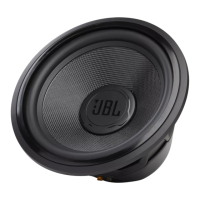
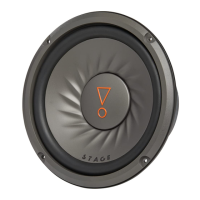
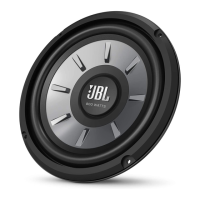
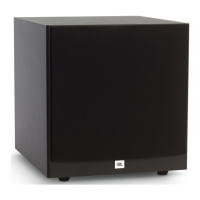

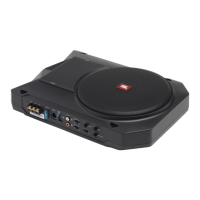
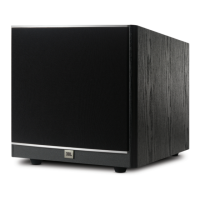
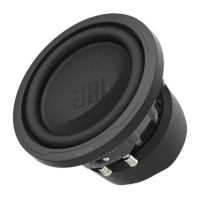
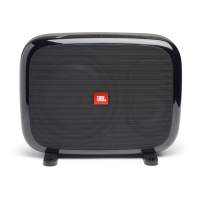
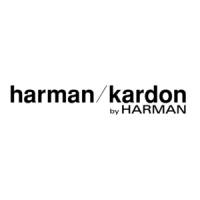
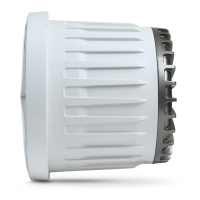
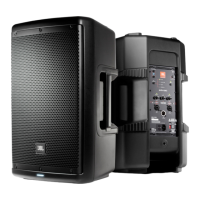
